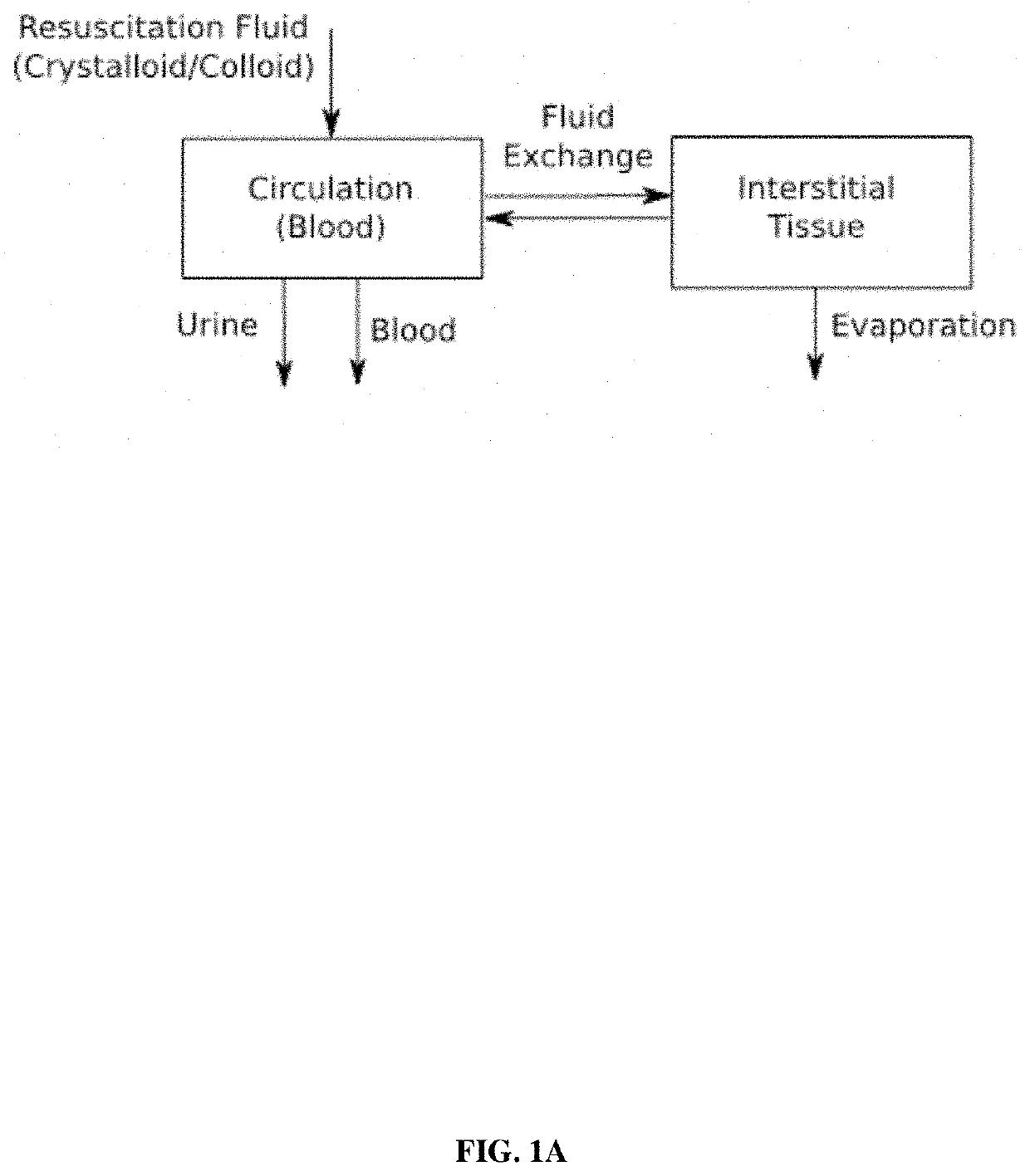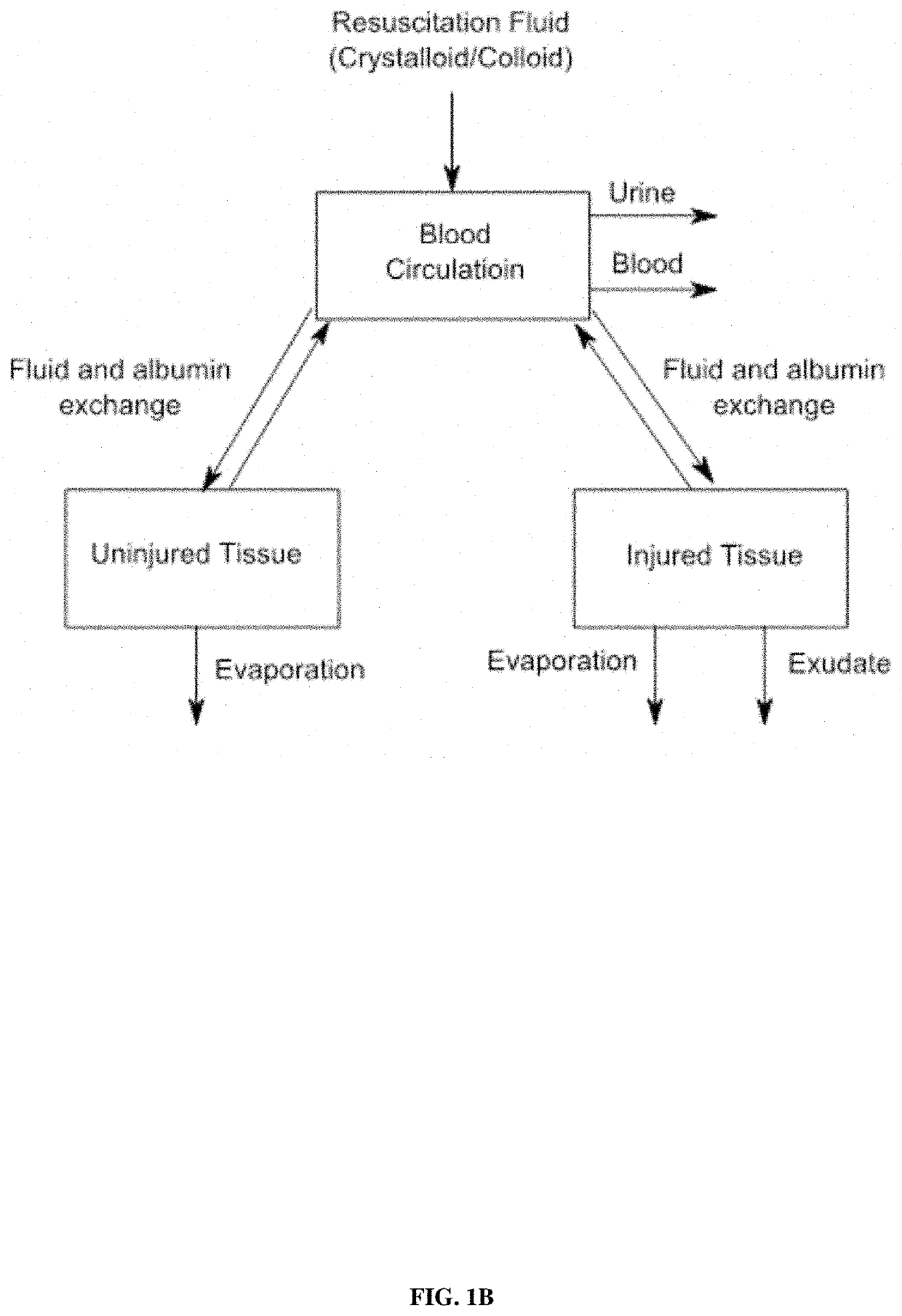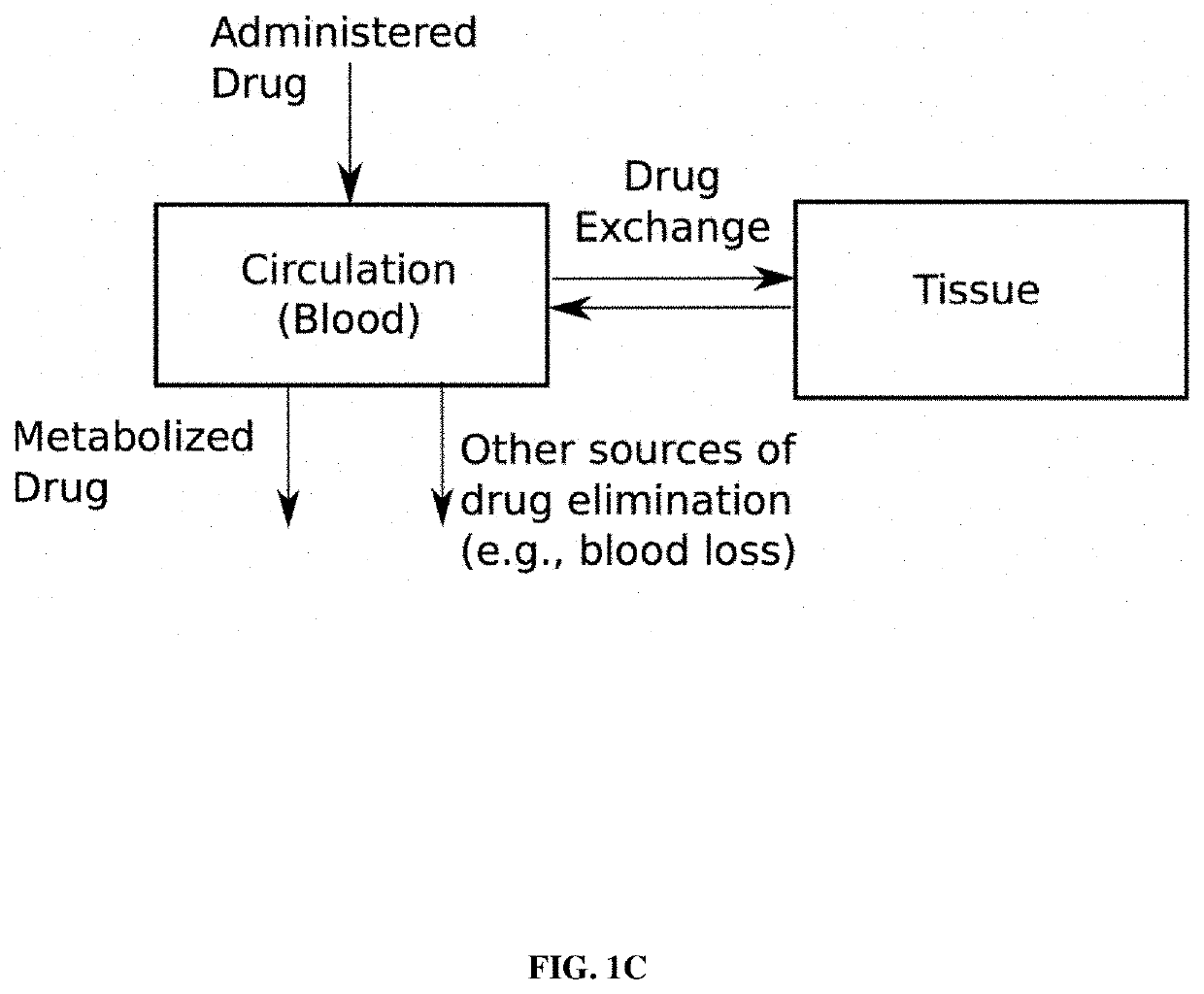Hierarchical adaptive closed-loop fluid resuscitation and cardiovascular drug administration system
a closed-loop fluid and adaptive technology, applied in the direction of diagnostic recording/measuring, diagnostic user/patient communication, angiography, etc., can solve the problems of patients under-resuscitation and over-resuscitation
- Summary
- Abstract
- Description
- Claims
- Application Information
AI Technical Summary
Benefits of technology
Problems solved by technology
Method used
Image
Examples
example 1
Fluid or Drug Infusion Rates Using Lower-Level Adaptive Control Architecture
[0087]The present disclosure describes a process of computing the fluid or cardiovascular drug infusion rate using lower-level adaptive control architecture. The lower-level adaptive control architecture is applied to a problem involving only fluid administration, only cardiovascular administration, or fluid and cardiovascular drug administration. In the case of a combined fluid and cardiovascular drug administration, two lower-level adaptive controllers running in parallel are implemented to compute infusion rates for fluid and cardiovascular drug. The fluid or cardiovascular drug infusion rate is computed using lower-level adaptive control architecture through the following steps:[0088]1) Select a sensor that can measure an endpoint for fluid or cardiovascular drug administration. For fluid administration, the endpoint includes variables such as stroke volume variation, pulse pressure variation, mean arter...
example 2
Approximation for Modeling Unknown Dynamics and Patient Parameters for Fluid Distribution
[0098]A two-compartment model is used to build the closed-loop fluid resuscitation architecture. The same approach is applied for compartmental models with 3 or more compartments.
[0099]A mass balance equation for a two-compartment dynamical system model is given by:
{dot over (v)}c(t)=u(t)+JL(t)−Jt(t)−Jurine(t)−Jblood(t),t≥0
{dot over (a)}c(t)=QL(t)−Qt(t)−ablood(t),
{dot over (v)}t(t)=Jt(t)−JL(t)−Jevaporation(t),
{dot over (a)}t(t)=−QL(t)+Qt(t),
where u(t) is the rate of fluid infusion, JL(t) is the rate of volume transfer from interstitial tissue to circulation, Jt(t) is the rate of volume transfer from circulation to interstitial tissue, Jurine(t), Jblood(t), and Jevaporation(t) denote loss of fluid volume due to urine production, hemorrhage, or evaporation (and other types of insensible water loss), respectively. Furthermore, ablood(t) denotes the rate of loss of protein (albumin) mass from hemorr...
example 3
the Value of Continuous Infusion
[0119]At each time instant t, the infusion rate of the controller (for fluid or cardiovascular drug) is given by
[0120]u(t)={0,u^(t)≤0,u^(t),u^(t)>0,whereu(t)=-11+wqT(t)Q(z(t))wpT(t)P(z(t)),andz(t)=Δ[m(t-Δt),m(t-2Δt),u(t-Δt),u(t-2Δt)]T,P(z(t))=Q(z(t))=Δ[11+e-σ1(m(t-Δt)-mtarget),…,11+e-σnnode(m(t-Δt)-mtarget),11+e-σ1(m(t-2Δt)-mtarget),…,11+e-σnnode(m(t-2Δt)-mtarget),11+e-σ1u(t-Δt),…,11+e-σnnodeu(t-Δt),11+e-σ1u(t-2Δt),…,11+e-σnnodeu(t-2Δt)],
σ1, . . . , σnode, are sigmoid parameters (e.g., ranging from −100 to 100), nnode represents the number of nodes of the neural network (e.g., nnode=8), and m(t) represents the smoothed (denoised) sensor measurement used as an endpoint for fluid or drug administration (e.g., stroke volume variation, urine output rate, mean arterial pressure, central venous pressure, systolic pressure variation, etc. for fluid resuscitation; and mean ...
PUM
 Login to View More
Login to View More Abstract
Description
Claims
Application Information
 Login to View More
Login to View More - R&D
- Intellectual Property
- Life Sciences
- Materials
- Tech Scout
- Unparalleled Data Quality
- Higher Quality Content
- 60% Fewer Hallucinations
Browse by: Latest US Patents, China's latest patents, Technical Efficacy Thesaurus, Application Domain, Technology Topic, Popular Technical Reports.
© 2025 PatSnap. All rights reserved.Legal|Privacy policy|Modern Slavery Act Transparency Statement|Sitemap|About US| Contact US: help@patsnap.com



